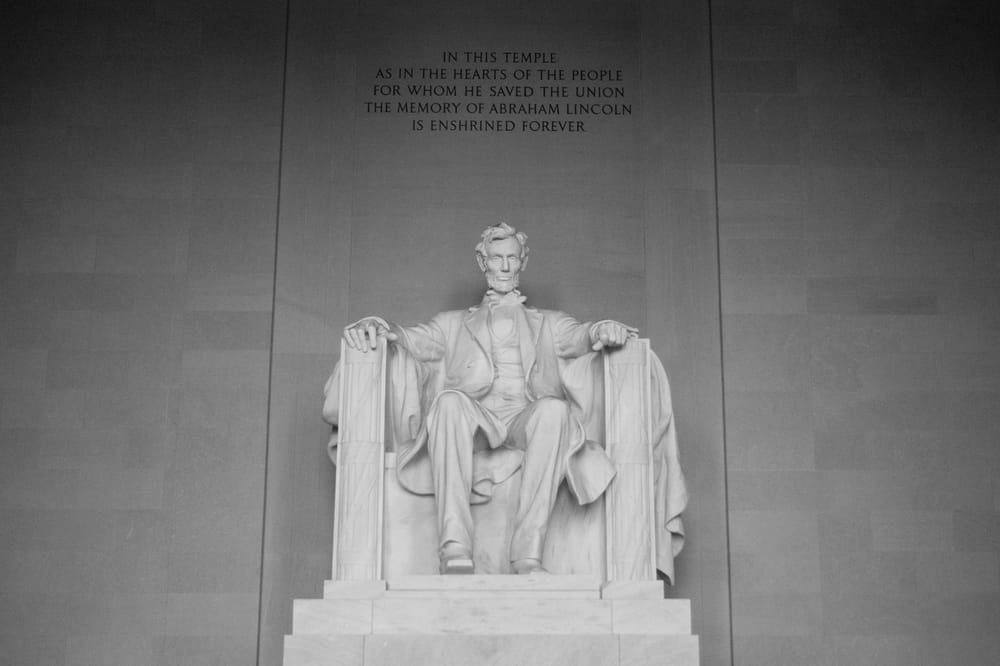I received a reply to one of my stories where I was chided by a Trump supporter who informed me it was Republicans that ended slavery and, among other things, that “Trump wasn’t racist,” and neither were his supporters. While she had some things right, she’d been misled about others and missed the Party’s actions over the last hundred years. I always try to be helpful, so here’s a brief recap of the history of the Republican Party. Friends don’t let friends remain ignorant.
In the early 1850s, there was great turmoil within two major political parties of the day: the Democrats (at least the Northern ones) and the Whig Party. There were raucous arguments about enslavement, most of which concerned expanding slavery into new states as the country grew. The Missouri Compromise of 1820 allowed Missouri to become part of the United States while allowing enslavement but preventing it in the new state of Maine and any new states created from the Louisiana Purchase lands.
In 1854, The Missouri Compromise was dissolved by the Kansas-Nebraska Act. It made it possible for formerly free states to adopt enslavement and gave any new state the right to offset free state California, which upset the delicate balance between free and enslaved states. Many Whig Party members, who were generally against the expansion of slavery, found themselves in disarray after seeing the Kansas-Nebraska Act passed and losing the 1852 Presidential Election to the Democrats, so they decided to go a new direction.
Meetings were held in several locations across the upper-Midwestern states, but the one credited with forming the Republican Party was held on March 20, 1854, in Ripon, Wisconsin. The founding Members were Abraham Lincoln, Horace Greeley, Alvin E. Bovay, Henry J. Raymond, John C. Freemont, Francis P. Blair, Edwin D. Morgan, Amos Tuck, and Salmon P. Chase.
The new Republican Party garnered significant interest among northern Protestants, business people, and prosperous farmers. They got little traction among Catholics and white Southerners. Enslavement wasn’t the only issue separating Democrats and Republicans. While both parties claimed to be “pro-business.” Republicans favored the gold standard, a national banking system, high tariffs, and railroads. They shared interests with “Free Democrats,” combined, they made up a majority of voters in almost every Northern state by 1858. At that point in time, Republicans hadn’t evolved to the point of wanting to free the enslaved (though some did) or see them as their social or intellectual equals. Their primary goal was to limit the expansion of slavery and improve some of the conditions they faced. I encourage anyone to read the text of the Lincoln-Douglas debates to see what they honestly thought.

Lincoln was elected President in 1860; his primary goal was maintaining the Union between Northern and Southern states. He was perfectly willing to accept the status quo of enslavement if he could. Only when the Southern states started seceding, with the first being South Carolina in December of 1860, did he begin to change his tune. Mississippi, Florida, Alabama, Georgia, Louisiana, and Texas soon followed before the Civil War began at Fort Sumpter on April 12, 1861. After that, Virginia, Arkansas, North Carolina, and Tennessee seceded from the country. President Lincoln then issued the first draft of the Emancipation Proclamation in 1862 and the final version in 1863. The goal was to disrupt the economy of the South and prevent Britain and France from joining the war on the side of the Confederacy.
It’s important to note what the Emancipation Proclamation did and didn’t do. It freed slaves only in states that seceded from the Union, provided they could reach free territory independently. Slaveholding states that didn’t secede, like Kentucky, were free to continue the practice of enslavement with no problem from the United States government. Many in the Republican Party were ahead of Lincoln in seeking the abolishment of slavery; they saw freeing the slaves as a way to make inroads into the Southern states where they had never successfully gained a coalition. Some, including Lincoln, were worried about what would happen if a massive population of enslaved people were freed and came up with plans to ship them to Liberia and Central America. Black leaders like Frederick Douglass convinced Lincoln of the folly of his ways.
Republicans were at the forefront of efforts to grant the enslaved their freedom after the Civil War. They passed the 13th, 14th, and 15th Amendments, giving the formerly enslaved freedom and the vote. They passed the so-called KKK Acts, which curtailed the Klan and its efforts in the early 1870s, causing them to die out until they rose again nearly.
Though Lincoln was assassinated early in his second term, the era immediately after his death in 1865 is what many Republicans refer to as when they were the “Party of Lincoln,” They can rightfully point to the progress the nation made under Republican control that might have taken decades longer without them. I give them all the credit for what they were; the same can’t be said about them now.
The slippery slide of the Republican Party began in the late 1870s with the Compromise of 1877. The Presidential Election of 1876 was contested, and the electors of three states were in dispute, with Democrats meeting just one more elector to clinch the election. Democrats won the popular vote, and there was good reason to believe Democrats should have rightfully won the Presidency, though they wouldn’t control Congress and thus couldn’t pass many initiatives. Republicans and Democrats made a backroom deal that allowed the Republicans to keep the Presidency under Rutherford B. Hayes but called for Republicans to remove federal troops from the South, which were the only thing protecting the formerly enslaved, allowing them to vote, for example.
Hayes pulled out the troops in 1877 and passed the Posse Comitatus Act in 1878, ensuring federal troops would never return except under certain circumstances. This effectively ended Reconstruction; the Black Republicans that had been elected to Congress previously lost their seats, and the Jim Crow era was ushered in. Republicans who had once stepped in during the worst abuses (the KKK Acts) now looked the other way. Lynchings rose, and the political offices once held by Republicans were ceded to the Democrats. Long before Lyndon B Johnson thought he’d lost the South for a generation, the Republicans gave the South to the Democratic Party.
Skipping ahead to the 1960s, the Southern Strategy was in full effect by the Republican Party. Democrats, after the passage of the Voting Rights Act, were actively recruiting Black voters, and Republicans were trying to make America afraid of Black people. They became the party of voter suppression. It was as if the parties decided to switch places, not out of ideology but because of political expediency. The Republican Party utilized the Southern Strategy to elect Richard Nixon, Ronald Reagan, George H. W Bush, George W. Bush, and Donald Trump. The Republican Party got almost all the Black votes during Reconstruction but had now become almost exclusively white.
White supremacy had become the roadmap to victory. America was sufficiently afraid of “Willie Horton,” “welfare queens,” and “super-predators” (a term also used by Democrats) that it ramped up both mass incarceration and voter suppression. Donald Trump became the personification of white supremacy with his attacks on everybody of color. It would be gratuitous of me to remind everyone that his company refused to rent to Black people in his younger days, marking their applications “C” for colored so they would be rejected. I can be petty, so I threw that in there. He also took out a full-page ad advocating the death penalty for the Central Park Five, who were innocent. Think Donald Trump apologized?
Trump’s most significant accomplishment was making it possible for white supremacists to throw away their robes and come out of their racist closets. He appointed openly white nationalists to his staff. At one time, Steve Bannon was his chief advisor, and Stephen Miller wrote speeches and developed his immigration policy. Miller (and Jeff Sessions) were chiefly responsible for throwing brown children in cages and separating them from their families, some forever.
The Klan is far less of a presence today, but they have been joined by the Oath Keepers, Proud Boys, Boogaloo Bois, and hundreds of other hate groups across the country. The SPLC documented 940 groups in 2019, most bunched in states led by Republicans. Many came together in Charlottesville, Virginia, in 2017, which led to a clash, killing one woman and two State Police Officers. White supremacists were chanting, “Our blood, our soil,” and, “You will not replace us.” Then President Trump said there were “good people on both sides.”
Republicans had a choice of which direction to take after Trump lost the 2020 Election (something J.D. Vance couldn’t bring himself to say in the recent Vice Presidential Debate). They’ve doubled down on racism, falsely accusing legal Haitian immigrants of ruining a community with their presence, stealing pets, and eating cats and dogs. When the lie was uncovered, they justified its perpetuation by saying it helped shine a light on immigration. The Party of Lincoln is now the Party of Hate.
I hope this helps my friend. She may think twice before trying to tell me who the Republicans were at their inception while ignoring who they are today.
This post originally appeared on Medium and is edited and republished with author's permission. Read more of William Spivey's work on Medium. And if you dig his words, buy the man a coffee.

